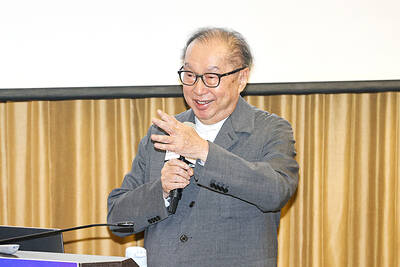The damage from the COVID-19 pandemic to economies in the Asia-Pacific region is predicted to reach US$3 trillion over two years, S&P Global Ratings said on Friday.
The latest estimate is higher than the US$2 trillion in lost economic output that S&P in April forecast for the region in April.
Based on its estimate, economic growth across the region this year would contract by 1.3 percent, compared with the 0.3 percent growth the ratings agency previously forecast.
However, regional economies would recover next year with 6.9 percent growth, S&P said.
“Asia-Pacific has shown some success in containing COVID-19 and, by and large, responded with effective macroeconomic policies,” S&P Global Ratings Asia-Pacific chief economist Shaun Roache said in a statement. “This can help cushion the blow and provide a bridge to the recovery.”
The IMF last week said in its latest World Economic Outlook report that growth in Asia’s emerging and developing economies this year would likely contract 0.8 percent before rebounding next year with 5.9 percent growth.
S&P retained its forecast that Taiwan’s and South Korea’s economies this year would shrink by 1.2 percent and 1.5 percent respectively, citing the nations’ success in containing COVID-19, a swift reopening of their economies, governments’ targeted fiscal easing and support from the resilient technology sector.
The ratings agency also held its growth forecast for China at 1.2 percent this year and 7.4 percent next year, but warned that China’s private-sector confidence remains fragile.
S&P cut its forecast for Japan’s economy, saying it would contract by 4.9 percent this year and grow 3.4 percent next year, adding that consumers have not recovered from the effects of last year’s consumption tax.
“We expect cautious consumers in Japan to save more than before COVID-19, and this will crimp spending and growth,” Roache said.
The agency further lowered its forecast for India’s economy to a 5 percent decline this year, compared with the 1.8 percent growth that S&P previously predicted, citing the country’s difficulties containing the virus, an anemic policy response and underlying vulnerabilities, especially across its financial sector.
S&P also cut its growth forecasts for Indonesia from 1.8 percent to 0.7 percent this year and predicted that Malaysia’s economy would contract by 2 percent, compared with a decline of 1.1 percent it estimated earlier.
The agency said that Thailand’s economy would fall 5.1 percent this year, down from a 4.2 percent contraction it forecast previously.
While most economies in the Asia-Pacific region would see a sharp bounce next year, the recovery looks set to be weighed down by weak balance sheets, as governments, companies and households might try to bolster their weak financial positions by saving more, paying down debt and spending less, S&P said.
“The downturn caused by COVID-19 did not start as a balance-sheet recession, but may end up as one,” Roache said. “This means less investment, a slower recovery and a permanent hit to the economy that will last even after a vaccine is found.”

BYPASSING CHINA TARIFFS: In the first five months of this year, Foxconn sent US$4.4bn of iPhones to the US from India, compared with US$3.7bn in the whole of last year Nearly all the iPhones exported by Foxconn Technology Group (富士康科技集團) from India went to the US between March and last month, customs data showed, far above last year’s average of 50 percent and a clear sign of Apple Inc’s efforts to bypass high US tariffs imposed on China. The numbers, being reported by Reuters for the first time, show that Apple has realigned its India exports to almost exclusively serve the US market, when previously the devices were more widely distributed to nations including the Netherlands and the Czech Republic. During March to last month, Foxconn, known as Hon Hai Precision Industry

Taiwan Semiconductor Manufacturing Co (TSMC, 台積電) and the University of Tokyo (UTokyo) yesterday announced the launch of the TSMC-UTokyo Lab to promote advanced semiconductor research, education and talent development. The lab is TSMC’s first laboratory collaboration with a university outside Taiwan, the company said in a statement. The lab would leverage “the extensive knowledge, experience, and creativity” of both institutions, the company said. It is located in the Asano Section of UTokyo’s Hongo, Tokyo, campus and would be managed by UTokyo faculty, guided by directors from UTokyo and TSMC, the company said. TSMC began working with UTokyo in 2019, resulting in 21 research projects,

Ashton Hall’s morning routine involves dunking his head in iced Saratoga Spring Water. For the company that sells the bottled water — Hall’s brand of choice for drinking, brushing his teeth and submerging himself — that is fantastic news. “We’re so thankful to this incredible fitness influencer called Ashton Hall,” Saratoga owner Primo Brands Corp’s CEO Robbert Rietbroek said on an earnings call after Hall’s morning routine video went viral. “He really helped put our brand on the map.” Primo Brands, which was not affiliated with Hall when he made his video, is among the increasing number of companies benefiting from influencer

Quanta Computer Inc (廣達) chairman Barry Lam (林百里) yesterday expressed a downbeat view about the prospects of humanoid robots, given high manufacturing costs and a lack of target customers. Despite rising demand and high expectations for humanoid robots, high research-and-development costs and uncertain profitability remain major concerns, Lam told reporters following the company’s annual shareholders’ meeting in Taoyuan. “Since it seems a bit unworthy to use such high-cost robots to do household chores, I believe robots designed for specific purposes would be more valuable and present a better business opportunity,” Lam said Instead of investing in humanoid robots, Quanta has opted to invest